Do you have a question about the Samsung 592-29336 and is the answer not in the manual?
Details limitations on implied warranties and remedies for the appliance.
Space to record model number, serial number, and purchase date for service.
Essential precautions to reduce risk of fire, electric shock, or injury.
Warns against flammable fluids and oily items in the washer.
Lists necessary tools and parts for connecting water inlet hoses and installation.
Guidance on selecting the proper location for washer performance and noise.
Details minimum clearances required for alcove or closet installations.
Warns about electrical shock and grounding requirements for safe operation.
Provides instructions for grounding a cord-connected or permanently connected washer.
Instructions for removing transport system with safety warning.
Criteria for choosing a suitable location for the washer.
Guidance on connecting water supply hoses and drain.
Detailed steps for connecting hot and cold water inlet hoses.
Instructions to flush water lines to remove particles before connecting hoses.
How to attach hot and cold water hoses to the washer's inlet valves.
Methods for positioning and securing the drain hose for proper drainage.
Steps to ensure the washer is properly leveled for optimal performance.
Final checks for all installed parts, tools, and water connections.
Reinforces electrical safety checks before plugging in the washer.
Highlights the washer's large capacity for bulky garments and bedding.
Describes the JetWash™ system for thorough washing and efficient rinsing.
Explains the advantages of the DD motor for power, efficiency, and fewer repairs.
Explains the Sanitize cycle for removing 99.9% of certain bacteria.
Explains the self-cleaning cycle for the drum to prevent odors and residue.
Lists and briefly describes various wash cycles for different fabric types.
Explains the typical sounds expected during normal washer operation.
How to select water temperature and spin speed for cycles.
How to adjust soil level and washing time for optimal cleaning.
Instructions on how to add or remove laundry items during a cycle.
How to activate or deactivate the audible signals.
How to add or remove laundry items during a wash cycle.
Steps to save and recall custom wash cycle settings.
Recommendations for preparing clothes, including detergent use and zipper closure.
Guidance on sorting clothes by soil level, color, and fabric type.
Instructions on removing clothes from the washer promptly after the cycle.
Emphasizes the use of HE detergents and warns against regular detergents.
Explains how to use the detergent, bleach, and softener dispensers correctly.
Details why High Efficiency (HE) detergents are necessary for optimal performance.
Instructions for filling the fabric softener compartment with liquid softener.
A table detailing preset cycle settings for various wash parameters.
Indicates which options can be selected with specific preset cycles.
How to pause the washer and then resume the cycle.
Step-by-step guide to starting a wash cycle using the cycle selector.
How to change cycles or options before or after starting a cycle.
Steps to cancel a wash cycle and drain the machine.
How to set a delayed start for the washing cycle.
Steps to take if a power failure occurs during a cycle.
Explains the Pre Soak function for improving wash performance on heavily soiled items.
Details the JetWash™ feature and its availability with different cycles.
Instructions for cleaning the washer's exterior surfaces and internal drum.
Steps for periodic cleaning of the detergent, bleach, and softener dispensers.
Steps for preparing the washer for storage, including draining and disconnecting.
Advice on protecting the washer's top cover and front frame from scratches.
Explains the self-cleaning cycle for the drum to remove mold and odors.
Recommends replacing inlet hoses every five years for safety and performance.
Guidance on preparing the washer for non-use, storage, or moving, including winterizing.
Specific steps for protecting the washer during extended periods of non-use.
Solutions for when the washer fails to power on or begin a cycle.
Troubleshooting steps for issues with no water or insufficient water supply.
Solutions for excessive vibration or noise during operation.
Checks to perform if the washer stops unexpectedly during a cycle.
Reasons and solutions for filling with the wrong water temperature.
Steps to resolve issues with the lid lock or failure to unlock.
Solutions for problems with the washer not draining or spinning properly.
Explains why a load might be too wet and how to improve spin results.
Checks for water leaks and their common causes, such as hose connections.
Solutions for excessive sudsing, including proper detergent usage.
Explains washer information codes and provides corresponding solutions or service advice.
Details limitations on implied warranties and remedies for the appliance.
Space to record model number, serial number, and purchase date for service.
Essential precautions to reduce risk of fire, electric shock, or injury.
Warns against flammable fluids and oily items in the washer.
Lists necessary tools and parts for connecting water inlet hoses and installation.
Guidance on selecting the proper location for washer performance and noise.
Details minimum clearances required for alcove or closet installations.
Warns about electrical shock and grounding requirements for safe operation.
Provides instructions for grounding a cord-connected or permanently connected washer.
Instructions for removing transport system with safety warning.
Criteria for choosing a suitable location for the washer.
Guidance on connecting water supply hoses and drain.
Detailed steps for connecting hot and cold water inlet hoses.
Instructions to flush water lines to remove particles before connecting hoses.
How to attach hot and cold water hoses to the washer's inlet valves.
Methods for positioning and securing the drain hose for proper drainage.
Steps to ensure the washer is properly leveled for optimal performance.
Final checks for all installed parts, tools, and water connections.
Reinforces electrical safety checks before plugging in the washer.
Highlights the washer's large capacity for bulky garments and bedding.
Describes the JetWash™ system for thorough washing and efficient rinsing.
Explains the advantages of the DD motor for power, efficiency, and fewer repairs.
Explains the Sanitize cycle for removing 99.9% of certain bacteria.
Explains the self-cleaning cycle for the drum to prevent odors and residue.
Lists and briefly describes various wash cycles for different fabric types.
Explains the typical sounds expected during normal washer operation.
How to select water temperature and spin speed for cycles.
How to adjust soil level and washing time for optimal cleaning.
Instructions on how to add or remove laundry items during a cycle.
How to activate or deactivate the audible signals.
How to add or remove laundry items during a wash cycle.
Steps to save and recall custom wash cycle settings.
Recommendations for preparing clothes, including detergent use and zipper closure.
Guidance on sorting clothes by soil level, color, and fabric type.
Instructions on removing clothes from the washer promptly after the cycle.
Emphasizes the use of HE detergents and warns against regular detergents.
Explains how to use the detergent, bleach, and softener dispensers correctly.
Details why High Efficiency (HE) detergents are necessary for optimal performance.
Instructions for filling the fabric softener compartment with liquid softener.
A table detailing preset cycle settings for various wash parameters.
Indicates which options can be selected with specific preset cycles.
How to pause the washer and then resume the cycle.
Step-by-step guide to starting a wash cycle using the cycle selector.
How to change cycles or options before or after starting a cycle.
Steps to cancel a wash cycle and drain the machine.
How to set a delayed start for the washing cycle.
Steps to take if a power failure occurs during a cycle.
Explains the Pre Soak function for improving wash performance on heavily soiled items.
Details the JetWash™ feature and its availability with different cycles.
Instructions for cleaning the washer's exterior surfaces and internal drum.
Steps for periodic cleaning of the detergent, bleach, and softener dispensers.
Steps for preparing the washer for storage, including draining and disconnecting.
Advice on protecting the washer's top cover and front frame from scratches.
Explains the self-cleaning cycle for the drum to remove mold and odors.
Recommends replacing inlet hoses every five years for safety and performance.
Guidance on preparing the washer for non-use, storage, or moving, including winterizing.
Specific steps for protecting the washer during extended periods of non-use.
Solutions for when the washer fails to power on or begin a cycle.
Troubleshooting steps for issues with no water or insufficient water supply.
Solutions for excessive vibration or noise during operation.
Checks to perform if the washer stops unexpectedly during a cycle.
Reasons and solutions for filling with the wrong water temperature.
Steps to resolve issues with the lid lock or failure to unlock.
Solutions for problems with the washer not draining or spinning properly.
Explains why a load might be too wet and how to improve spin results.
Checks for water leaks and their common causes, such as hose connections.
Solutions for excessive sudsing, including proper detergent usage.
Explains washer information codes and provides corresponding solutions or service advice.



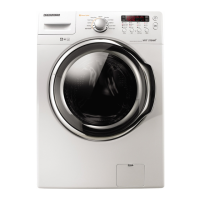


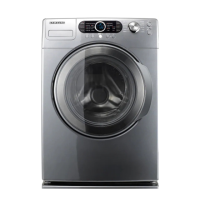
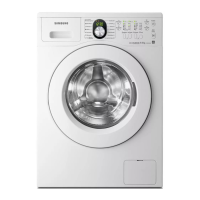
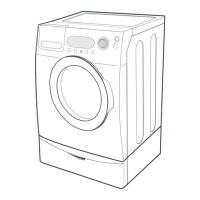


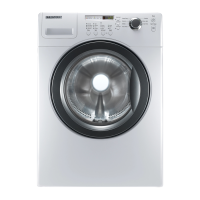
